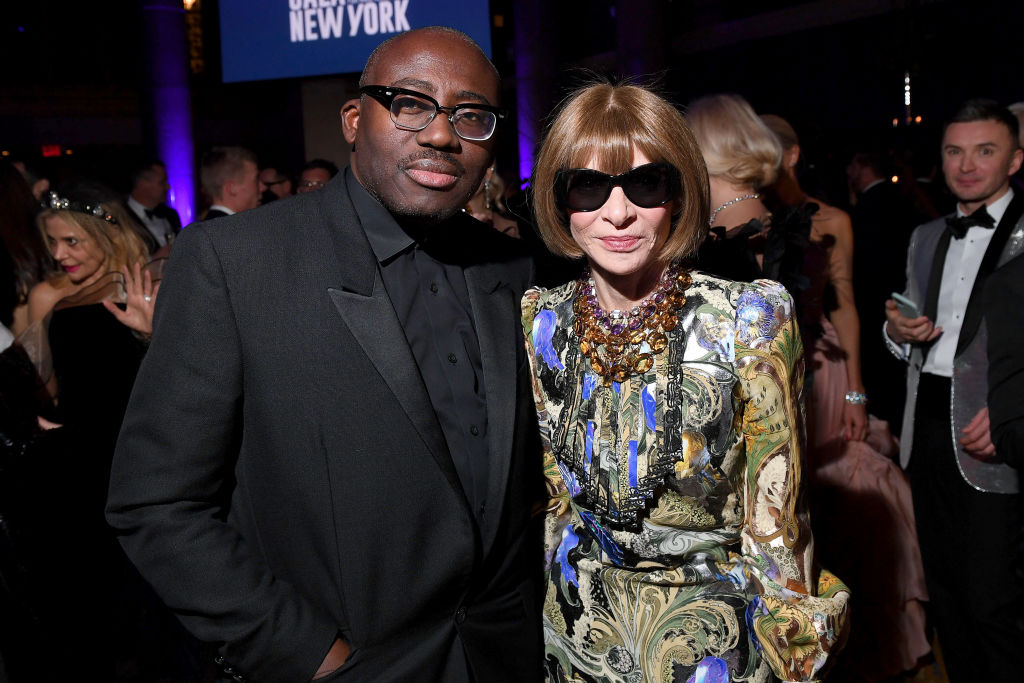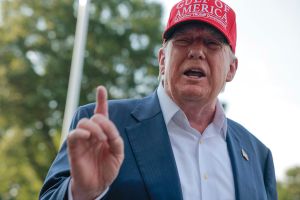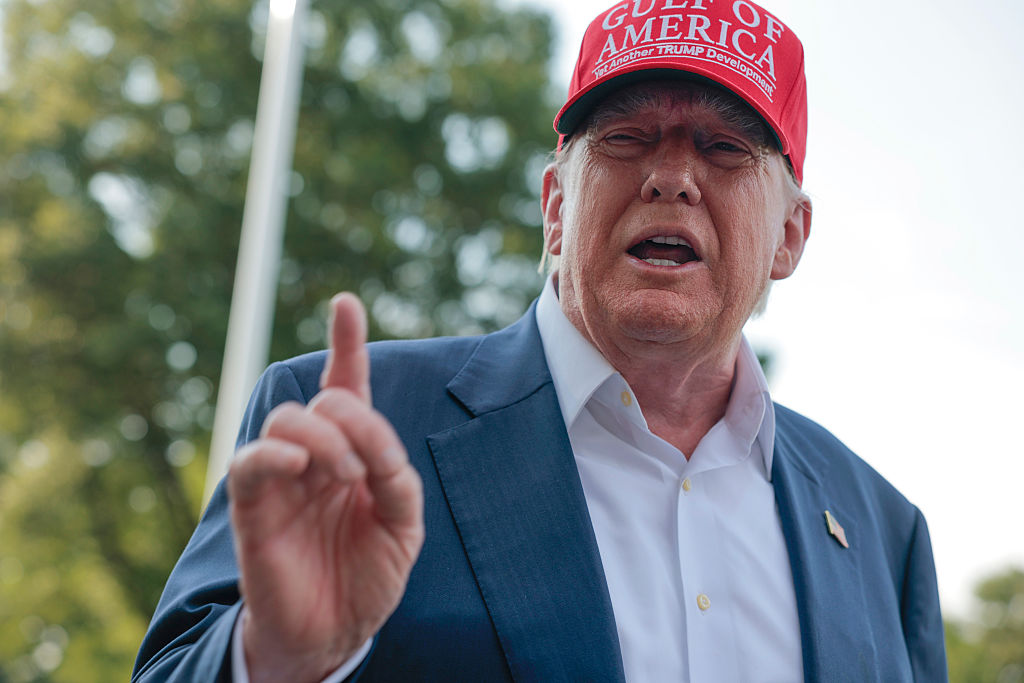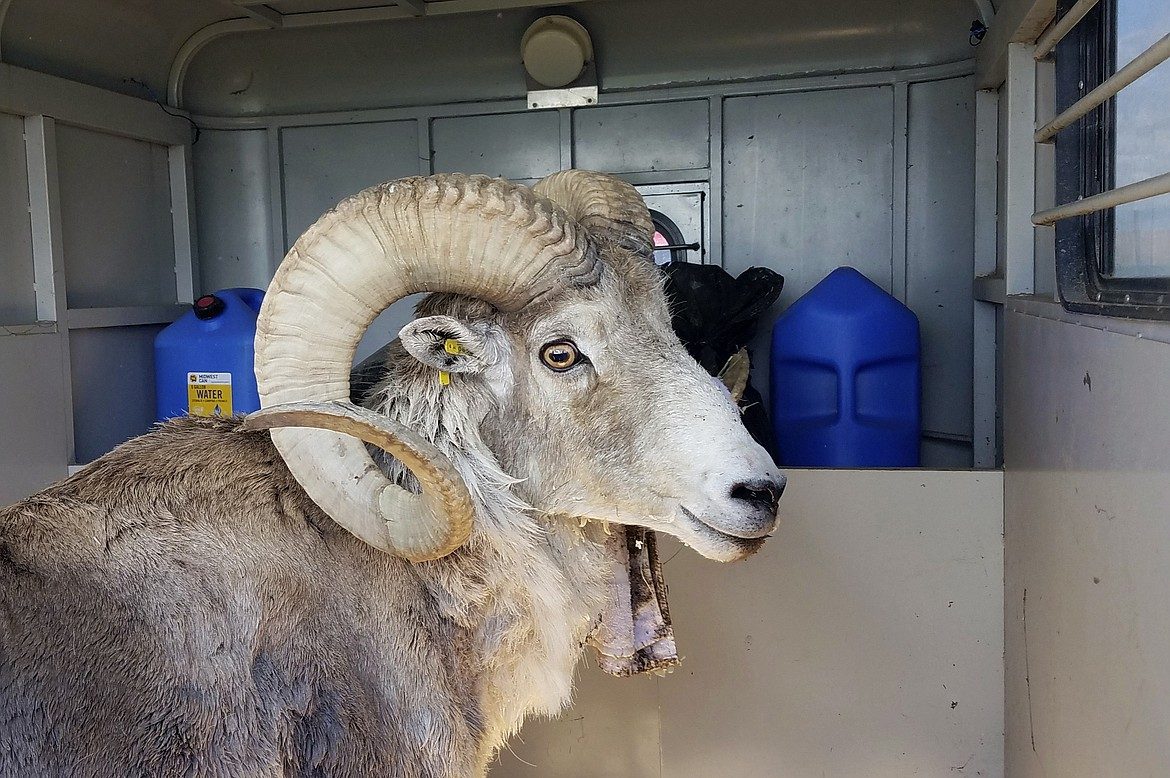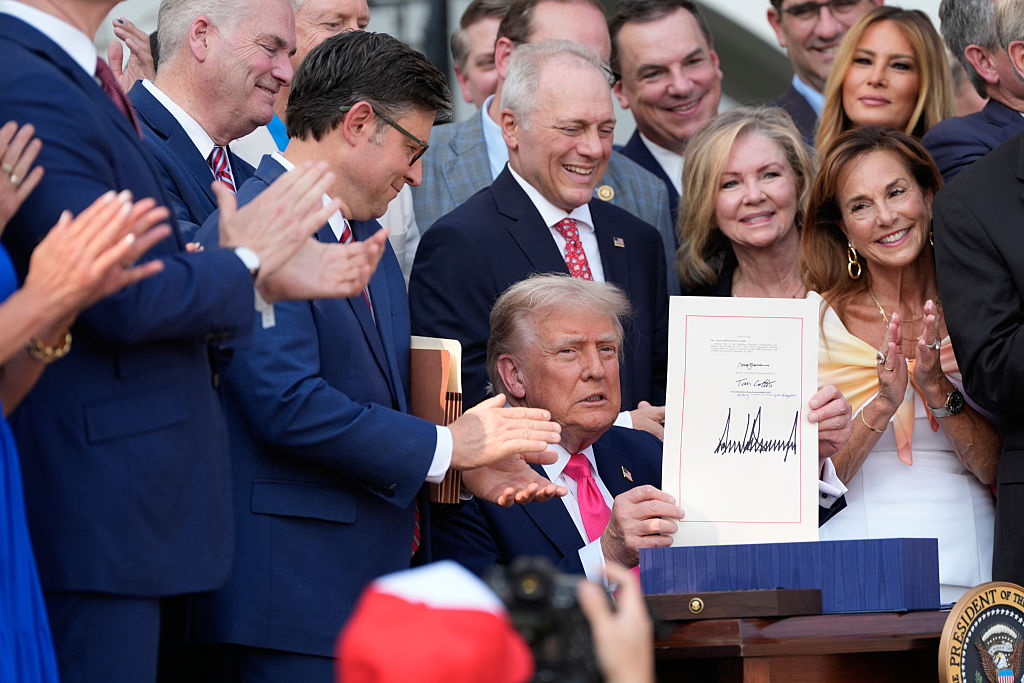“Coming into British Vogue, I remember thinking, I wanted to create a magazine for all women. I said to myself, ‘I’m probably going to get fired for making it inclusive,’ but at the same time I thought that would be great. Because at least I would have been true to myself.” Edward Enninful said this less than a year ago in an interview. The outgoing editor-in-chief of British Vogue seems to have manifested his own firing. Last week, Condé Nast announced that Enninful was being bumped upstairs. For relinquishing the reins of British Vogue, he has been handed a non-job as “editorial advisor of British Vogue and global creative and cultural advisor of Vogue.” The press release called it a “promotion.” No one is buying it.
Enninful stuck to his diversity crusade till the very end. The whispers at Vogue’s London headquarters are that Enninful was pushing for the publication to become genderless, a move that wasn’t going to wash with Vogue’s very own no-nonsense Iron Lady, Anna Wintour, who has been editor-in-chief of American Vogue since 1988 and more recently took on the role of global chief content officer for Condé Nast.
The reshuffle was no surprise to staff. “It’s been a long time coming,” one Condé Nast employee told The Spectator. “Their relationship has been strained for months and Ed felt like he had no control over anything.”
After the news was announced, Enninful’s predecessor, who held the job from 1992 to 2017 (the longest-serving editor in the history of the publication), offered some insight into his departure from the role and the future of the magazine. “He was ultimately always playing second fiddle to Anna Wintour,” Alexandra Shulman told the Daily Mail. “He leaves amid an avalanche of rumors of rifts with Wintour, but whether they are true or not, the announcement that he will be replaced by an ‘editorial content director,’ reporting to a multi-step ladder ending in the New York office, delivers a death knell to all that I treasured about the job.”
But what Shulman treasured about the job was far different from Enninful’s tenure. His “manifesto” (his words) revolved around representation. The Ghanaian-British creative was the first black man to hold the top job at Vogue and his overriding mission was to create a magazine that was “inclusive and about diversity, where every woman will see themselves.” He would often talk about going against the status quo, saying things like “disruption is important, because that’s the only way the world can move forward. To the younger generation, I want to say ‘be as fearless as you can and disrupt in your own way.’”
But disruption was ultimately his downfall. A Vogue staffer tells me that there were two camps in which you’d find yourself in the magazine’s London office: “The first was the fashion bible for women, which is what Vogue has traditionally always been. The other one was far more ‘woke.’ They were the ones pushing for a different vision and it was much more progressive.”
Enninful’s time at Vogue saw many firsts. Timothée Chalamet was the first man to have a solo cover. Dame Judi Dench, an aging star, was spread over the front page. In an interview last year about his favorite Vogue cover, Enninful said the inspiration behind his first — the December 2017 issue, spotlighting mixed-race model Adwoa Aboah — was aimed at resetting “the image of modern Britain.” “It was important to create a cover that represented the Britain of today, a multicultural society where everyone was welcome. Where my family was welcome,” he said.
Under Enninful, Vogue had disabled and plus-sized cover stars. He also helmed the magazine’s first braille edition. Enninful’s Vogue transitioned from a women’s fashion magazine to a political statement. “He was always pushing for the next thing that was seen as progressive, but I think the magazine started to lose itself in the process. He was following fads. It was no longer recognizable from the Vogue that he walked into,” a Condé Nast employee told The Spectator.
Farrah Storr, the former editor of Elle, wrote in a Substack post that, “Everything that made [Enninful] not a classical editor (that is to say, a trained journalist with a ‘words’ background) was why he flew so high early on. Vogue morphed from a playful, albeit slightly horsey, fashion magazine into a deeply political manifesto.” Along the way, she claimed that people stopped buying it. It was, more and more, given away or sold at a discount. “It was joyless, too political and seemed to have forgotten its role as a high-end shopping magazine.”
Enninful’s progressivism served him well at the beginning. But as tenure continued, his formula for publicity proved less effective, Vogue editor-in-chief Anna Wintour stuck with what works. The matriarch of the American publication is synonymous with Vogue and has been perfecting her editorial recipe over more than three decades.
When Enninful took over, advertisers were reportedly keen on the new direction. In 2017, “woke” paid. Marketing teams were scrambling for a chance to be associated with him and be seen to make deals with a diverse, inclusive range of talent. Under Enninful, the magazine attracted hundreds of millions of pounds in advertising from companies like BMW. Advertising money aside, PR moves, like the Forces for Change issue in September 2019, which was guest-edited by Meghan Markle, and having Greta Thunberg on the cover, sold out in a matter of days. After early success, Enninful saw himself as Wintour’s heir apparent, with sources telling the Mail that “there have been plenty of pretenders to the throne, but Edward considers himself her natural successor. He is the only person who appears to be a real threat.”
Six years later and a lot has changed. In 2017, when Enninful started, the magazine needed to get with the times. The Vogue look was out, and WASPy-women covers were old hat. But fashions change in politics as well as clothes, and with “wokeness” on the wane we emerge from the collective hysteria of the past few years, Enninful’s progressivism is proving to be too much. More importantly, he seems to have forgotten that his magazine’s success has relied on the fact that it has been a staple for wealthy, fashionable women. When asked about the Vogue reader a few years ago, Enninful said: “They are predominantly women but in this day and age can we really separate the sexes? I’m a man working in a woman’s publication. Femininity sounds old-fashioned.”
As one employee put it, “Nobody was ever going to make Vogue genderless while Anna Wintour was around. I’m not surprised he’s going; I’m surprised he ever lasted this long.”



